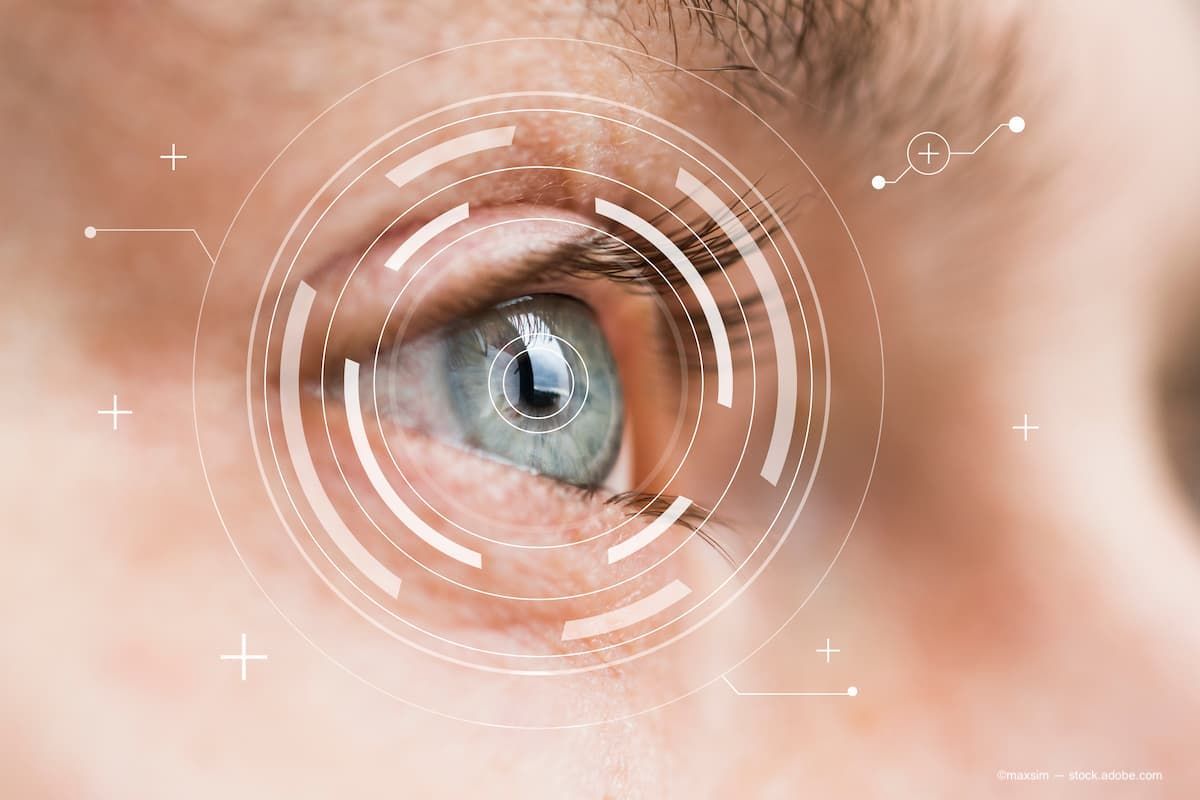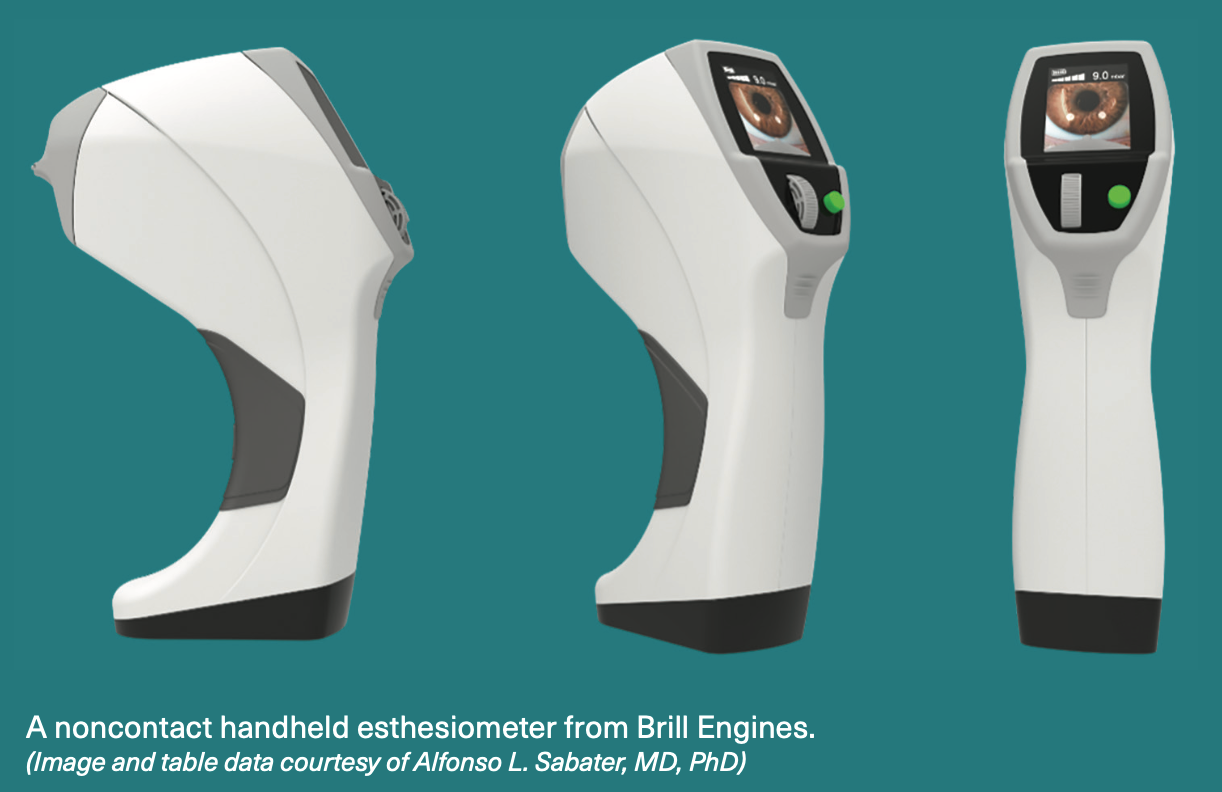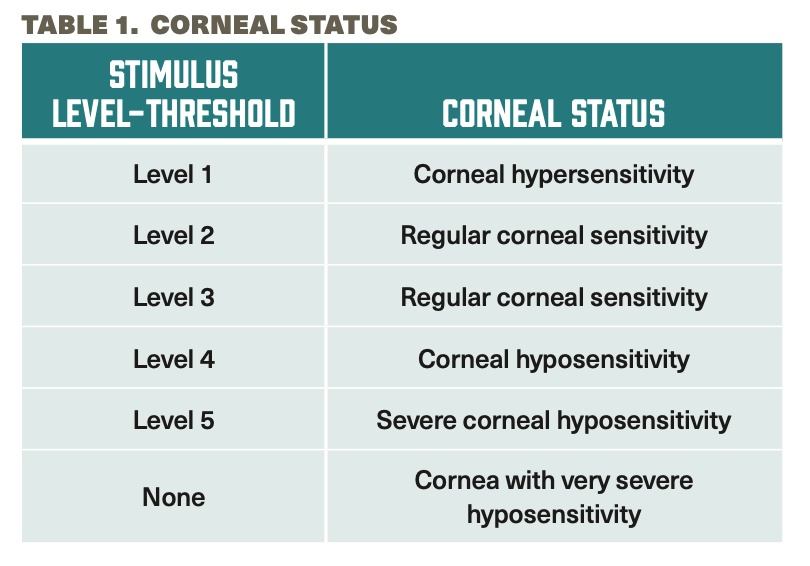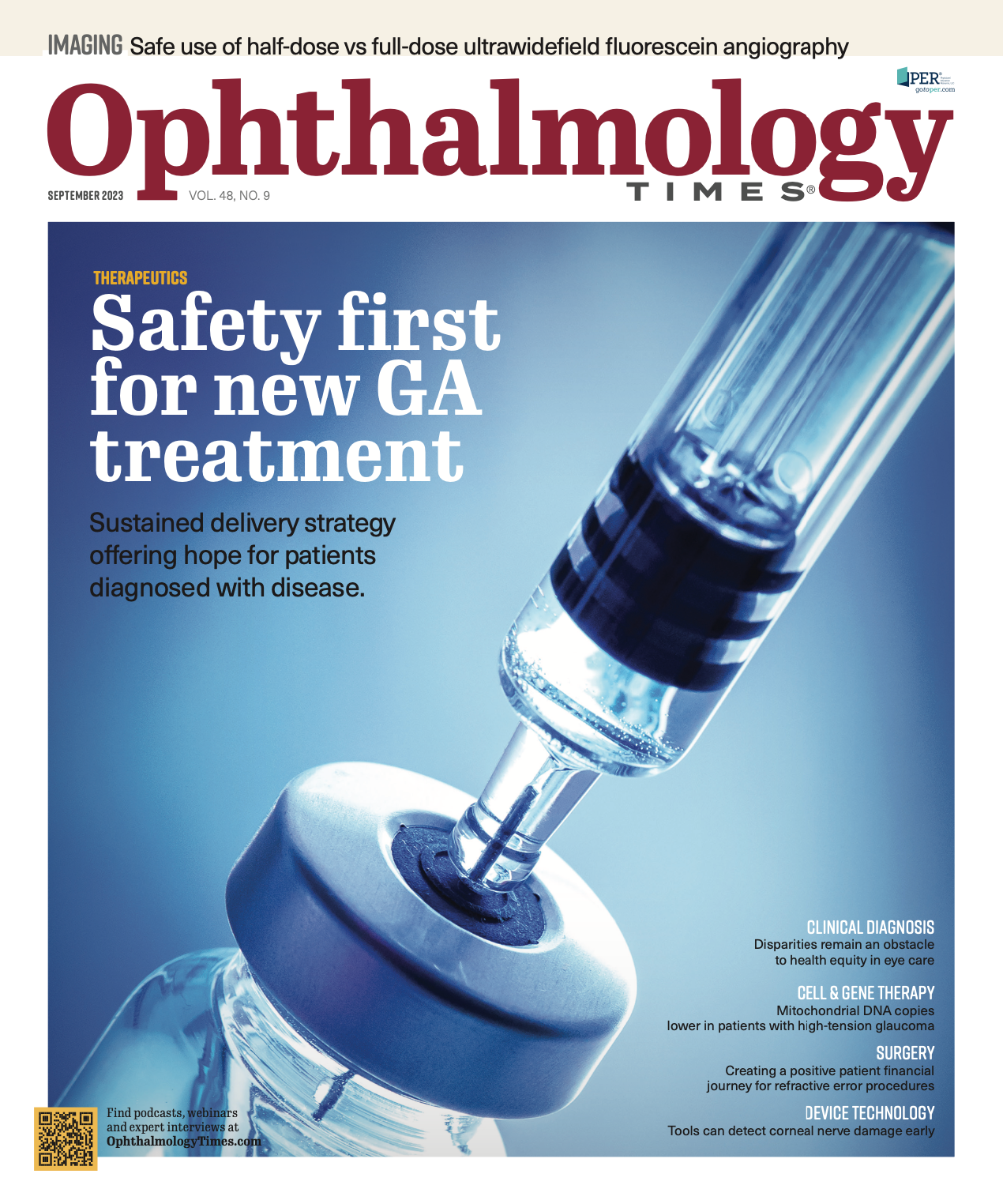Publication
Article
Digital Edition
Tools can detect corneal nerve damage early
Noncontact esthesiometry screens for all levels of neurotrophic keratitis.
(Image Credit: AdobeStock/maxsim)

The cornea has the largest sensory and autonomic nerve fibers concentration of any human tissue.1 In addition to detecting sensitivity, these nerves contribute to maintaining a healthy ocular surface by providing vital trophic feed to the corneal epithelium.
Tear instability and ocular surface damage can disrupt corneal epithelial barrier function, which permits greater access to adverse environmental conditions to the corneal sensory receptors and makes the cornea more vulnerable to injury. Over time, prolonged irritation of the ocular surface may elevate the pain threshold, resulting in reduced corneal sensitivity.2
A frequent cause of loss of tear film homeostasis and dry eye disease (DED) is the use of certain topical eye medications, such as IOP-lowering eye drops, especially if used for a long time.3,4
This can lead to pain and visual impairment, which affects patients’ quality of life. Over time, it may lead to a reduction in corneal sensitivity and long-term dysfunction of corneal innervation, a degenerative condition known as neurotrophic keratitis.5
Esthesiometry study

Corneal sensitivity was analyzed with a new noncontact and hand-held esthesiometer (Brill Engines; Figure 1), which was recently approved by the FDA. The Corneal Esthesiometer Brill (CEB) produces precise, reproducible, and constant-pressure pulses of air at 5 levels of intensity, using a pressure range of 2 mbar (level 1) to 10 mbar (level 5). It can be handheld or placed in the slit lamp.
We evaluated a group of 31 patients (57 eyes) with DED, 23 patients (46 eyes) with glaucoma using IOP-lowering drops, and 21 healthy subjects (33 eyes). In all patients, corneal sensitivity was assessed with the CEB placed in the slit lamp. Three measurements at each level were taken in the lower quadrant of the cornea. In patients who did not perceive any stimulus, a level of 11 mbar (1 point above the maximum detection level) was assigned. We found that corneal sensitivity was significantly reduced in DED and glaucoma patients compared with the control group (P < .05). On the other hand, we found that the patients with DED had significantly more symptoms compared with healthy patients and those with glaucoma.
The study data were presented at the 2023 annual meetings of the American Academy of Ophthalmology and the Association for Research in Vision and Ophthalmology.
Clinical relevance
As the study results showed, many patients using glaucoma medications develop some level of neurotrophic keratitis. And many times this is a silent condition, as evidenced by the low symptom scores. This may explain why patients with glaucoma frequently develop severe ocular surface damage that is extremely challenging to treat. Corneal esthesiometry is not usually performed in clinical practice because the current devices may be invasive or difficult to use.
Use of esthesiometer
For instance, the Cochet-Bonnet esthesiometer contains a retractable nylon monofilament. It can be used to apply pressure in different ranges by adjusting the size of the filament. Despite being considered the golden standard, there are a few limitations when using it. Stimulus reproducibility is compromised due to practical difficulties in replicating the force applied with the nylon filament, alignment, and placement. Additionally, the rigidity of the filament is affected by ambient humidity, so it is not precise or accurate. Disruption of the epithelial surface by the filament, patient apprehension, and an inability to mask the subject may also impact measurements with this device.6
However, noncontact esthesiometry could change this situation, because the CEB does not have any of the previous limitations and can be used in infectious corneal pathologies. Recent studies carried out in Europe demonstrate that the CEB was an effective, helpful, and safe tool to assess corneal sensitivity. It worked on a similar force range to the Cochet-Bonnet device. The mean values of forces detected by patients with DED and herpes zoster were similar in both esthesiometers (0.06 ± 0.02 mN for the CEB and 0.08 ± 0.14 mN for the Cochet-Bonnet).
The results with the CEB are not biased by the user because the inter- and intraobserver variability are almost nonexistent thanks to its electronic positioning system. The system ensures the esthesiometry takes place at the same distance from the patient’s cornea, and the remote trigger allows delivering the air pulse while avoiding moving the device and the constant-pressure air pulses.
This device has 5 levels of stimulation, and based on the results, it is concluded that the first level is subthreshold because the majority of healthy volunteers do not feel it. It can be helpful in hypersensitive patients, for example, and in cases of ocular pain. A healthy cornea’s sensitivity range corresponds to levels 2 and 3 (3.2 ± 1 mbar.). It makes sense that are 2 levels due to the variability in sensation in the general population. Patients with DED had a sensitivity threshold at level 4 corresponding to a hyposensitive cornea (6 ± 3 mbar.) A large proportion of the patients receiving topical hypotensive medications had a sensitivity threshold at level 5, corresponding to severe or very severe corneal hyposensitivity (7.5 ± 3 mbar.)7 See Table 1.

The CEB will allow physicians to easily detect early stages of neurotrophic keratopathy and implement therapeutic actions to avoid long-term damage to corneal nerves and, subsequently, to the ocular surface.
Decreased sensitivity
For example, in patients with glaucoma, decreased sensitivity may be an early indicator of the necessity to switch to preservative-free IOP-lowering drops or to perform an intervention to reduce or even discontinue the use of topical medications.
Similarly, in patients who have been diagnosed with DED, decreased sensitivity may require the use of specific medications such as cenegermin (Oxervate; Dompé US), which is an effective drug for the management of neurotrophic keratitis.
In summary, noncontact esthesiometry is an excellent screening tool for mild, moderate, or severe levels of neurotrophic keratitis, which will allow eye care specialists to easily detect corneal nerve damage earlier and implement specific actions to delay or restore function. Furthermore, this device provides the clinician an opportunity to follow up with the patient and evaluate the treatment’s overall effectiveness.
Alfonso L. Sabater, MD, PhD
P: 305-243-2020
Sabater is a surgeon-scientist and associate professor of clinical ophthalmology at the University of Miami Miller School of Medicine’s Bascom Palmer Eye Institute in Florida. He is the medical director of the Ocular Surface Program and director of the Corneal Innovation Lab at the Bascom Palmer Eye Institute. He has connection to Brill Engines.
Marta Villalba González, MD
E: info@hospitalarruzafa.com
Villalba González is an ophthalmologist at Hospital la Arruzafa in Córdoba, Spain. She has no financial disclosures related to this content.
References:
1. Shaheen BS, Bakir M, Jain S. Corneal nerves in health and disease. Surv Ophthalmol. 2014;59(3):263-285. doi:10.1016/j.survophthal.2013.09.002
2. Xu KP, Yagi Y, Tsubota K. Decrease in corneal sensitivity and change in tear function in dry eye. Cornea. 1996;15(3):235-239. doi:10.1097/00003226-199605000-00002
3. Romero-Díaz de León L, Morales-León JE, Ledesma-Gil J, Navas A. Conjunctival and corneal sensitivity in patients under topical antiglaucoma treatment. Int Ophthalmol. 2016;36(3):299-303. doi:10.1007/s10792-015-0115-1
4. Jaenen N, Baudouin C, Pouliquen P, Manni G, Figueiredo A, Zeyen T. Ocular symptoms and signs with preserved and preservative-free glaucoma medications. Eur J Ophthalmol. 2007;17(3):341-349. doi:10.1177/112067210701700311
5. Mastropasqua L, Massaro-Giordano G, Nubile M, Sacchetti M. Understanding the pathogenesis of neurotrophic keratitis: the role of corneal nerves. J Cell Physiol. 2017;232(4):717-724. doi:10.1002/jcp.25623
6. Golebiowski B, Papas E, Stapleton F. Assessing the sensory function of the ocular surface: implications of use of a non-contact air jet aesthesiometer versus the Cochet-Bonnet aesthesiometer. Exp Eye Res. 2011;92(5):408-413. doi:10.1016/j.exer.2011.02.016

Newsletter
Don’t miss out—get Ophthalmology Times updates on the latest clinical advancements and expert interviews, straight to your inbox.




